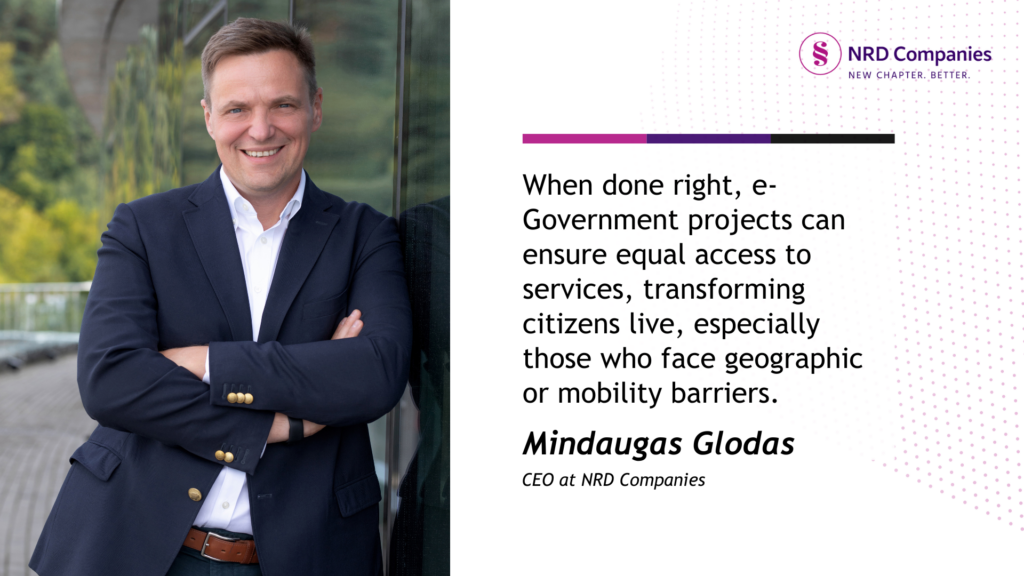Much has been written and discussed in academic circles on the value of e-Government projects yet, for many, the term is not entirely clear and lacks some real-life, tangible examples of delivering true public value.
To put things simply, e-Government initiatives leverage technology to improve the delivery of government services to its citizens. Ranging from simple websites that merely provide information to more complex systems, they are intended to allow citizens to interact with government agencies online and for government agencies to communicate with each other. A promising premise, you might say.

Measuring public value
To ensure the public value of these projects first and foremost, they should primarily be measured not only by such criteria as increased efficiency, ease of access and transparency but also by the effort required to bring these services online.
Efficiency and cost savings examples
One of the primary public value drivers of e-Government projects is when they can deliver increased efficiency and cost savings. Taking things back to basics, by providing services online for instance, governments can reduce the time and cost of providing services in person. Citizens can apply for permits, register and maintain businesses and pay taxes, all from the comfort of their homes. This reduces government staff resources as well as the need for in-person visits to government offices which undeniably have a negative impact on workers’ productivity and the economy in general.
An example of this is the Online Business Registry System (OBRS) project in Belize. This transformed the way businesses are registered in the country, improving transparency, and promoting accessibility. The new cost-saving system allows for the completion of a business registration within 24 hours as opposed to the 10-15 days required previously.
Better access to services
When done right, e-Government projects can improve citizens’ access to government services, especially those who face geographic or mobility barriers. For example, rural citizens may not have convenient geographic access to government offices and disabled citizens may have difficulty accessing them. By offering them online, e-Government projects can ensure that everyone has equal access to government services.
The South American country of Guyana, with a population of less than a million, started solving a distinct, geographical problem: accessibility to government services is vastly different in coastal, more densely populated areas than its hinterlands. The purpose of the project was to develop an effective e-Gov system and move government services to digital platforms in order to address the challenges of delivering services to citizens in rural communities.
Increased transparency and accountability
Another public value opportunity from e-Government projects is increased transparency and accountability. By making government operations and data available online, citizens can access information pertaining to their government’s operations and the way taxpayer money is spent. This fosters greater trust in government and promotes transparency in decision-making.
To increase transparency and accountability, the Commercial Registry of Anguilla was developed to enable numerous functionalities including incorporation, registration of business names, registration of documentation, enforcement of the “Registry Act” and provision of company information to the public. The system also helps facilitate information exchange with international law enforcement agencies with respect to the companies’ ownership information.
Better public service delivery
By implementing certain e-Government projects, governments have also been able to make public service delivery more efficient, cost-effective and responsive to citizens’ needs.
The government of Rwanda received assistance with the design, implementation, operation and monitoring of the Rwandan commercial registration services. This included company registration, business information, registration of secured transactions and registration of intellectual property rights. The project resulted in the creation of a one-stop shop for everything business registration-related. Within a few years, registering a business in Rwanda became free and fast: four procedures and five days compared to nine procedures and 16 days in previous years.
Reduced development efforts and costs
E-Government projects and advancements in technology continue to transform the way governments interact with citizens and deliver services. Developments such as increased use of AI, greater emphasis on open data and increased focus on cybersecurity are all vital to the transformation process. Yet, one of the emerging trends that supports the increased demand for public e-services, the lengthy government procurement cycles and the worldwide shortage of IT specialists, is the use of low-code programming platforms.
These are tools or sets of tools that allow users to quickly create the solutions, processes and services they need and minimize or even eliminate programming when making changes. The distinguishing feature of such tools is the ability to use graphical programming instead of traditional programming, a visual model where the sequences of various components are arranged, determining the system’s operation flow.
The essential advantage of these tools is the ability to overcome the shortage of specialists. “Low-code” tools can be efficiently used not only by experienced programmers but also by IT specialists from other fields, such as systems and business analysts, IT administrators and testers.
Leveraging technology to make things better
When considered and delivered well, e-Government projects have been seen to offer several public values that benefit both governments, citizens and businesses. They can increase efficiency and cost savings, improve access to services, promote transparency and accountability, foster citizen engagement and improve public service delivery.
Enabling governments to leverage technology, and in a growing number of cases, low-code solutions, can transform the way they deliver services to citizens, making government more accessible, efficient and responsive to citizens’ needs. Additionally, well-designed and implemented e-Government projects can have a substantial impact on several UN Sustainable Development Goals including the promotion of sustained, inclusive and sustainable economic growth (SDG 8), building resilient infrastructure, promoting inclusive and sustainable industrialization and fostering innovation (SDG 9) and reducing inequality within and among countries (SDG 10).
















